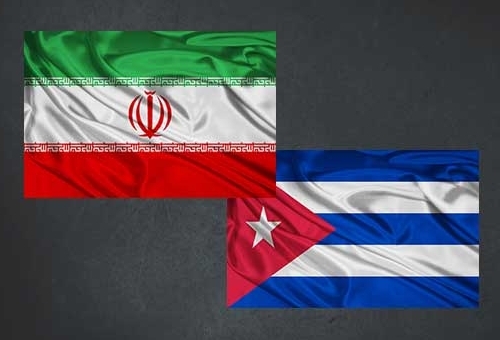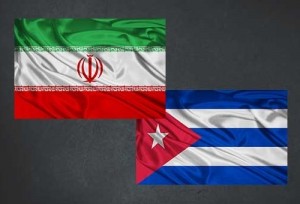An Iran nuclear czar? Zarif and Kerry today, Friday said a deal was never closer.
Iran has had 13 tons of their gold stored in South Africa for at least 2 years and due to lifted sanctions, the gold has been released and delivery in a handful of shipments under high security is complete. The gold was delivered to the central bank.
Since 2013 under the Obama White House agreement, Iran has received $4.2 billion in unfrozen assets and was awarded another $2.8 billion by Obama just to stay at the table and committing to continued talks.
Iran Violations:
Iran has been found in non-compliance with its International Atomic Energy Agency (IAEA) safeguards agreement, and accordingly is in non-compliance with the Nuclear Non-Proliferation Treaty (NPT).1 Iran is continuing its uranium enrichment program and heavy water-related activities in defiance of Security Council resolutions calling for their suspension. The IAEA is trying to resolve a number of matters indicating a possible military dimension to Iran’s nuclear program, but Iran is not cooperating with the IAEA’s investigations. There are well-founded concerns that the Iranian enrichment and heavy water programs have a military objective – to give Iran the capability to produce nuclear weapons if it decides to do so. What is not clear is how far Iran intends to proceed down this path – will it cross the nuclear weapon threshold, or if not, how far short will it stop?
Amongst other issues, this paper addresses the commonly held belief that Iran is entitled to undertake uranium enrichment, and the closely related question whether nuclear hedging – establishing a nuclear weapon break-out capability in the guise of a civilian program – is a legitimate activity under the NPT. If a negotiated solution with Iran is achieved that allows for continued enrichment, this must also adequately address international concerns that Iran’s nuclear program has a military purpose. A “solution” that allows continued development of a military dimension would be pointless. Many more details in this report.
Going back a decade, it has been well known that Iran has been using the black market to skirt sanctions. The audio discussion on the black market and violations is here. Additionally, you would be stunned at who does business with Iran and the value of that commerce.
What about the secret low enriched uranium? Glad you asked.
The controversy over the status of Iran’s newly produced low enriched uranium (LEU) hexafluoride under the Joint Plan of Action (JPA) initially surprised us at ISIS. We have been monitoring the various provisions of the JPA since its inception, including Iran’s pledge to convert its newly produced LEU hexafluoride stocks into uranium dioxide form during the JPA term and its extensions. We would have expected the public controversy to center on other issues, including the near 20 percent LEU stocks in Iran. These stocks are far too large, and if left in place, will undermine the administration’s central case that Iran would need 12 months to break out, if it reneged on a long term deal. Yet, upon reflection, this issue of the newly produced LEU is a microcosm of the legal, technical, and political challenges in the on-going negotiations with Iran. It is also another indication that U.S. secrecy is excessive and contributing to problems on its own. Finally, it is necessary to state that this case is a lesson in how difficult it is to understand all the issues in these negotiations, even for those of us who spend enormous amount of time following and assessing provisions in these negotiations.
Concessions
From CNN:
Concessions checklist
So what has the U.S. ceded so far? And what has it gotten in return? Supporters and opponents of the Iran talks are both keeping their checklists ready. They’re tallying the wins and losses and keeping a close eye on the remaining sticking points.
Breakout time
Breakout time is the amount of time it takes to amass enough weapons-grade uranium for one nuclear bomb. In the event of a final deal, if Iran were to dash toward weaponization, it would take 12 months to build a nuclear bomb, according to U.S. calculations.
That figure is a considerable improvement over the two- to three-month breakout time that Iran currently has.
Some worry, however, that one year is not enough to guarantee the U.S. and other countries could actually prevent Iran from obtaining a nuclear weapon should Iran decide to race toward one, given the number of diplomatic and verification steps that would precede the use of military force.
Centrifuges
Iran will be allowed to keep 6,104 centrifuges, and just over 5,000 of those will continue enriching uranium, based on the preliminary agreement.
That’s a far ways from where American officials initially said they wanted to end up, first demanding Iran cut its centrifuges to between 500 and 1,500 and then floating 4,000.
The agreement still cuts down most of the nearly 19,000 currently installed — about 10,000 of which are now used for enrichment — but even the additional centrifuges won’t be scrapped entirely. They’ll remain in Iran under the control of the UN’s nuclear watchdog, the International Atomic Energy Agency, and will be freed up at the end of the period of constraints on its program.
Enrichment activity
Under the framework for negotiations, Iran has already significantly reduced the level to which it enriches uranium, capping those levels far below what is needed for a nuclear weapon.
Iran has agreed to restrict all of its enrichment activity to one reactor site — Natanz. This is reassuring to the U.S. and Israel because it would be easier for them to take effective military action to degrade Iran’s nuclear capabilities.
Furthermore, Iran will only use its first-generation centrifuges, which are slow to enrich uranium and are unreliable.
Duration of the deal
The restrictions that will keep Iran to a one-year breakout time will expire after 10 years.
President Barack Obama has conceded that “in year 13, 14, 15 … the breakout times would have shrunk almost down to zero.”
After the 10th year, Iran would be able to start upping its uranium enrichment. And after 15 years, the program would be completely unbridled.
There was always going to be a sunset — it’s inconceivable that Iran would accept restrictions and inspections on its nuclear program indefinitely — but the Obama administration’s starting ask was for restrictions lasting 20 to 25 years.
Even if political change doesn’t come to Iran in that period — which he hopes it will — Obama insisted this spring that the U.S. will have “much more insight into their capabilities” as a result of the rigorous inspections, and 10 to 15 years improves considerably upon the status quo.
But the sunset provision has experts like Mark Dubowitz of the Foundation for the Defense of Democracies worried that Iran will simply “go back to what they were doing before” — and without the limitations of sanctions.
“We think 10 to 15 years is a long time,” he said. “They think it’s a blip in history.”
Revealing past Iranian military activities
For years the United States and the rest of the international community has demanded that Iran come clean about suspected past efforts to militarize its nuclear program.
Tehran even pledged to the IAEA in 2007 that it would do so, and the fact that it hasn’t raises questions about the reliability of its commitments.
When Kerry was asked by PBS in April about Iran’s obligation to answer such questions, he said bluntly, “They have to do it. It will be done. If there’s going to be a deal, it will be done.”
Kerry, though, recently indicated such a “confession” was no longer essential to a deal.
“We’re not fixated on Iran specifically accounting for what they did at one point in time or another. We know what they did,” Kerry said last month.
Underground nuclear sites
Under an eventual deal, Iran would stop enriching uranium at Fordow, its fortified, underground nuclear site, for 15 years and only use the facility for research with some inactive centrifuges remaining onsite. It also won’t be able to store any fissile material at the site.
Though the West had originally called for Fordow to be shut down entirely, cutting off enrichment at the site is a relief not just for the U.S. but also for Israel, which was concerned its military arsenal would not be able to reach the site — buried deep in the side of a mountain.
The U.S. has a more powerful bunker-busting bomb than Israel, one that may be able to penetrate the site, though not with total certainty.
Heavy water reactor
Iran will significantly modify its heavy water reactor so it can no longer produce weapons-grade plutonium, a possible component for a nuclear bomb.
Iran has already begun redesigning the reactor to limit its capacity — a key change for a country that has repeatedly defended the reactor’s medical and scientific applications.
Israel had previously called for the reactor’s total dismantlement, but serious modifications have quelled many concerns about Iran’s ability to use the reactor for non-peaceful purposes.
Outstanding issues
Officials still have to determine whether Iran will dilute or export its eight-ton stockpile of highly enriched uranium and determine the parameters for Iran to use more highly enriched uranium for scientific research purposes.
But it’s the two other remaining issues that are the most contentious, and will ultimately determine for most experts whether they have confidence that the deal will keep Iran from getting a nuclear bomb.
Inspections
The West is insisting that Iran give inspectors unfettered access to any site they suspect of nuclear activity — military sites included. Without that, officials fear that Iran could try to sneak its way to a bomb by using a secret facility, especially given its history of cheating and concealing its nuclear work.
“The most likely form of cheating would be at undeclared or secret facilities, and so you’ve got to have strong inspections,” said Gary Samore, who previously served as Obama’s top arms control adviser.
Iranian officials, though, have insisted that they won’t relent on that point, certainly not when it comes to military facilities.
Deputy Secretary of State Tony Blinken insisted Thursday on CNN that the U.S. will “walk away” if Iran doesn’t agree to the rigorous inspections and verification regime the U.S. is seeking.
Negotiators have floated the idea of a commission of countries that would hear Iran’s objections to inspections requests. But if Iran still refuses to allow inspections at the site, international sanctions would be reimposed.
Ilan Berman, a skeptic of the deal, said that type of “managed access” could give the Iranians the chance to scrub evidence from a site while they stall for time.
“You want to do snap inspections, not ones where they can move things around,” said Berman, vice president of the American Foreign Policy Council.
Sanctions relief
Western officials have insisted that sanctions won’t be removed until Iran holds up its end of the bargain by reining in its nuclear activity as agreed.
Iran, on the other hand, at first demanded sanctions be lifted as soon as a final agreement is signed and sealed. Iranian officials now appear to be relenting somewhat and agreeing that sanctions could fall at a later date, after they make the necessary changes to their nuclear program.
Negotiators are now looking to iron out the details of the sequence for the removal of those sanctions.
But once those sanctions come off, it’s unclear how effectively the international community could snap them back into place — if it’s even willing to. While Iran’s economy has suffered because of the restrictions, so have many companies based in the countries that have imposed them.



